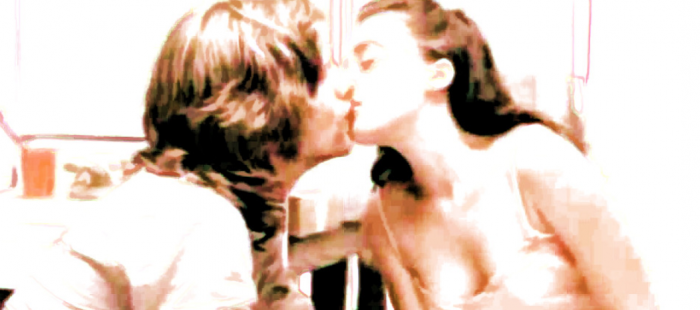Most species of animals have clear courtship behaviors.
The albatross, for example, engage in a repetitive sequence of neck bobbing and beak clacking, followed by a slithering glance at the sky, and ending with a loud exclamation. It is mesmerizing to the human eye.
The human mating dance is more subtle.
Most of us have a sense of what it should look like, but lacking clear rules, our dating dance is more subjective—which is what makes it so damn hard and confusing.
Some of us may feel like professional dancers. I can speak for women when I say that we’ve been exposed to it endlessly—we have a lifetime of practice just by virtue of just being female in this culture. Men flirt and buy us coffee and open doors, even if we are already in a relationship—gestures that are oft interpreted as steps in the dating dance.
This sense, in turn, causes additional confusion, as the line between being nice and being responsive isn’t always clear: Is he smiling when the door is pulled open for us? Is he saying thank you? Have we given a response to his call, or was there even a call at all?
Not every mating dance is going to be one that we understand and are able to interpret. Some of the dances might be awkward, clumsy, unpracticed, and confusing. Yet we want practiced and polished, for even teen albatross get to practice amongst the more experienced, something not all humans have access to.
We want confident and solid—to know what is happening and understand what is coming next. We want to know when we’re seeing him next or talking to him again. We want a secure order of operations.
Experts even try to create rulebooks and manuals, offering them up for sale by way of tidy online courses. Albatross, however, need no online courses—there is a structure provided by nature. Humans get no such thing, and so hope to find instructions that help us stumble and fumble to a lesser degree.
No matter how practiced, though, some people might simply dance to a different beat than we are used to.
What am I to make of the man who tries to kiss me on the first date? Or of the one who does not for nearly two months?
How am I supposed to know what texting me “good morning beautiful” means when he’s never met me?
Is that a better or worse way to dance than the man who says nothing at all until I ask him to call me, at which point he happily does so?
Part of the dance involves asking our friends to also try to guess what these things mean.
Some dances might seem strange to our eyes because we ourselves are out of practice, or the dance is now decades old and the person is using steps that were successful in their early years. They may not be aware of how the dance changes as we age—the steps are fewer, the dancers are tired, and there are now IPhones involved.
Married friends offer words of sympathy to me based on their recollections of what it was like to be single 20 years ago. They speak from the perspective of a former dancer, not a current one—for by now the men on my dance floor are weary, perhaps jaded or tired of dancing.
Maybe, like me, they have repetitive strain injuries from doing the dance for so long.
In any case, I can hardly blame men for being reluctant dancers, for I tire of trying to make sense of the “how’s ur day?” text.
It’s okay to want polished, practiced, and familiar in the courtship dance. It’s okay to wish for a kind of rulebook or manual that will tell us what moves to make and when. But the fact of the matter is that there is no rulebook, no next step, and no certainty that a particular action means a particular thing.
Few dancers are practiced and confident—and even fewer have the same interpretation of instructions. For this reason, we have to recognize that if we need someone else to lead the dance, we must exercise grace and patience.
The dance is also a phase—the “courtship phase.” The courtship dance matters: none of us progress without it. But it is subjective. There are no rules no matter how hard the other person tries to make them, and it’s all running through the filter of what we’ve been exposed to and the meaning we make of it.
Once this part is over, there may be a relationship and life with this person. Courtship behaviors fade and what’s left when the dance ends is a real person with real emotions and real personality traits.
Can we look behind awkward, clumsy courtship dancing to see if there are qualities and characteristics that are compatible for the real dance of life?
What really matters is what happens after the dance is over.
Are the qualities you seek present? Do they have the things you truly want in a partner? Are they behaving like someone you want to be with? Are they able to share their thoughts and feelings? Are they able to have hard conversations, or do they avoid them? Do they demonstrate that they can both listen and share? Are they willing to both give and receive love?
It can be hard to interpret and assess, for dance is an art and not a science.
The best thing we can do is keep our eyes to the arc of the storyline, and off the details of the footwork in the second line of the second minute.







Read 6 comments and reply